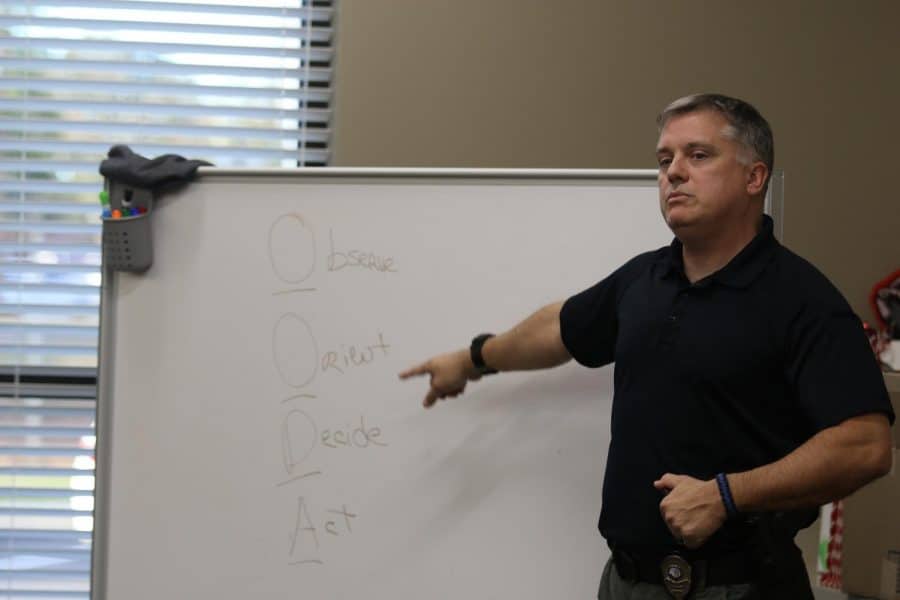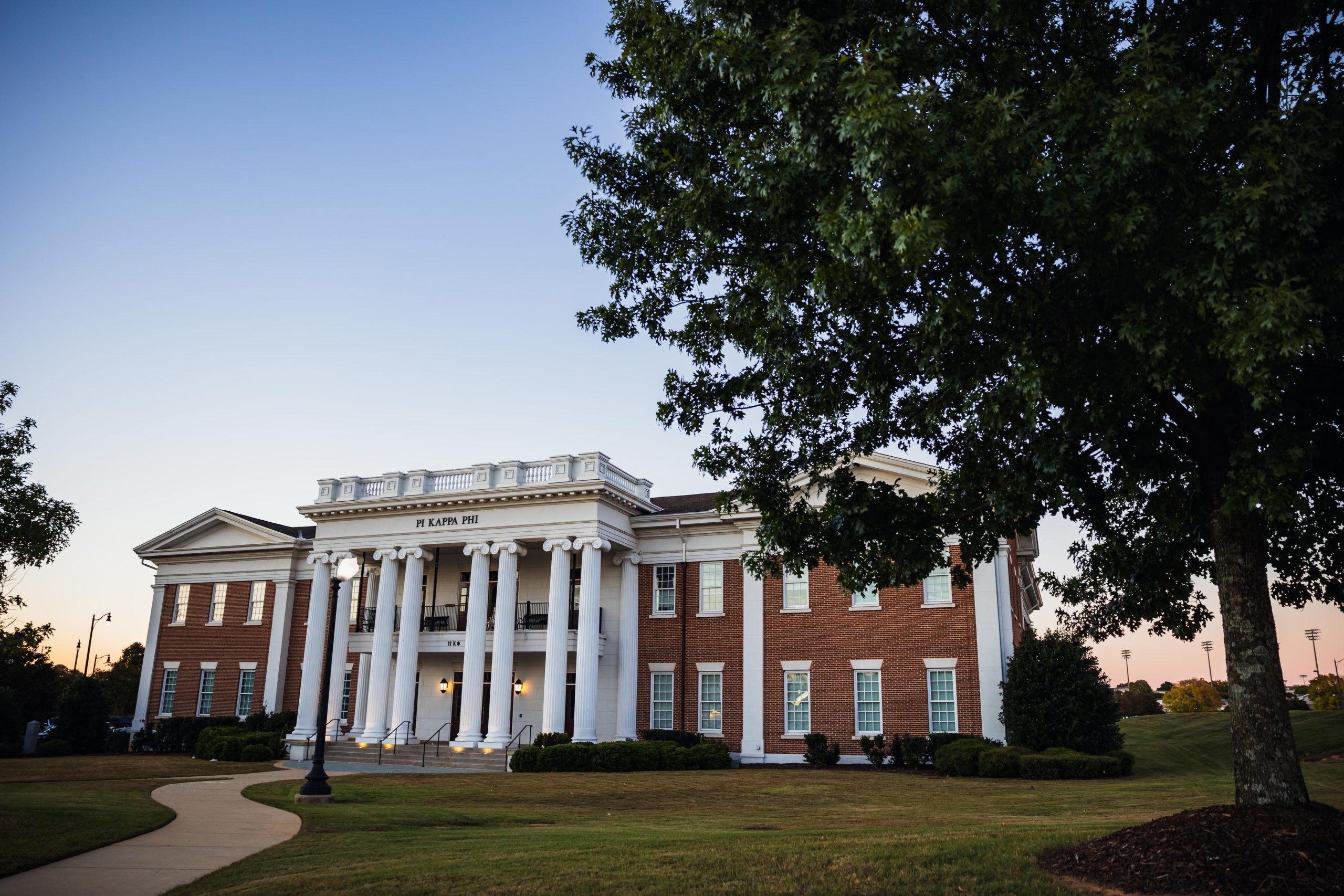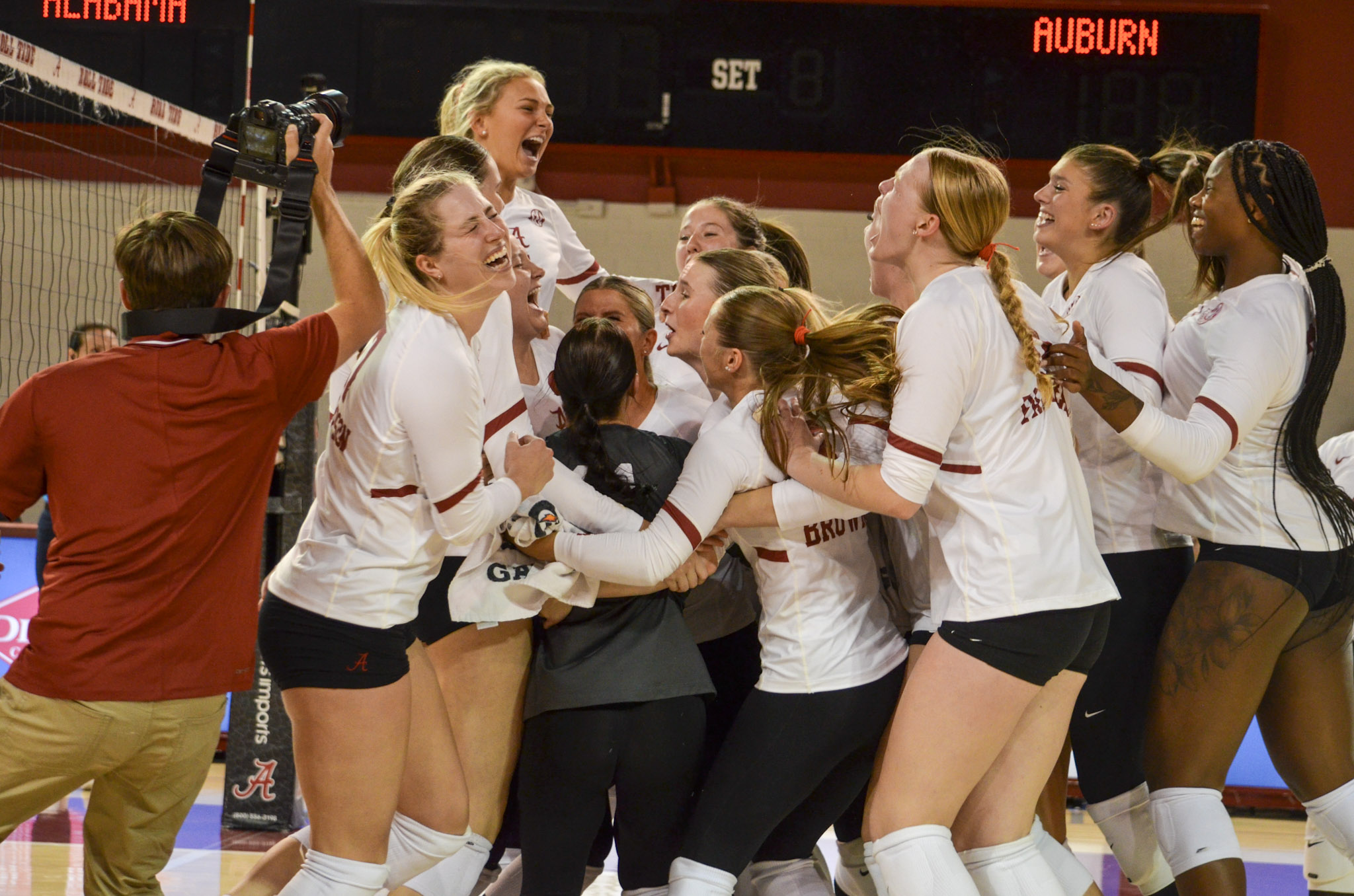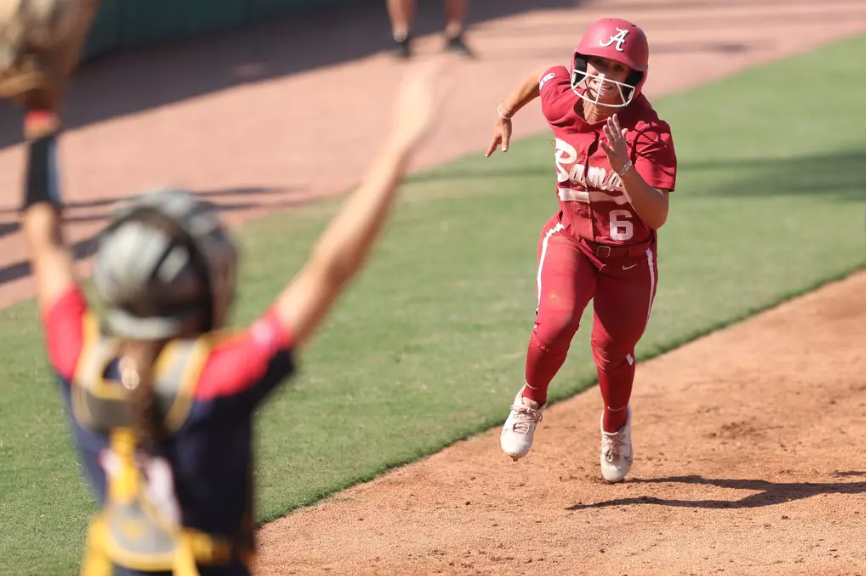UA employees learn the realities of active shootings
November 20, 2019
From 1966 to 2016, 930 people have fallen victim to mass shootings. As firearm technology gets more deadly, response times by authorities get quicker, and media sensationalism grows, the training offered to students and employees has adapted to reflect the reality of these horrific events.
A dozen faces on the projection screen stared back at the room, each more familiar than the last. Nobody was proud that they recognized them, but as the identity of mass shooters has become more well-known due to media exposure, it is no surprise that each face was able to be named and connected to an event.
The Run, Hide, Fight training, led by UAPD Lieutenant Ben Arnold and Office of Behavioral Threat Assessment representative Al Story, is an informative presentation given to UA employees to highlight the realities of shootings that occur in the classroom or workplace. The seminar began with a showing of a reenactment of the 1999 Columbine High School shooting, one of the most infamous events of its kind. Screams from students hiding under desks or in closets left everyone in attendance silent as they watched the very thing they were being trained to avoid or remedy.
“Don’t ever think it absolutely cannot happen,” Arnold said.
Arnold then went into breaking down the myths of active shootings. These included that the perpetrator will always display violent acts prior to the event, that there are places where a shooting would never occur, that police authorities will always respond in time to save everyone, and that the average person cannot do anything to help the situation or take down the shooter.
UAPD, the primary responders to any on-campus incident, has an average response time of 38 seconds, which is well ahead of the national average of five to six minutes. Some victims in past events have died of survivable wounds because of the amount of time that passed before they could be treated.
Arnold offered two main pieces of advice for those in these situations. First, the run, hide, or fight approach. In short, if those in trouble can picture a clear path of escape, running is the best option. All personal belongings, except a cell phone for emergency calls, should be left behind.
“Property can be replaced, and nothing is more important than your life,” Arnold said.
When hiding, a dark locked room that is barricaded by heavy objects can stop or discourage the intruder. Finally, fighting back can and should be a last resort. Mass chaos and aggression by a number of people can help the situation.
“When someone is an active threat, there are no rules,” Arnold said. “When they are no longer an active threat, it stops.”
Arnold offers this advice to successfully take down the person without future consequence to those trying to protect themselves. Once the person is trapped, it could take up to six people to hold them down by sitting on all limbs and the chest, and the firearm should be placed under a garbage can with someone sitting atop of it. Even if you think you are safe, do not open the door to help anyone, because you never know if they are being used by the threat as a prop.
“You may have guilt for the rest of your life, but at least you’ll be alive to tell it,” Arnold said.
Arnold’s other tried-and-true method is referred to as OODA: Observe, Orient, Decide and Act. This applies to decision making, and how when you act, someone must react, which puts them back at the start of the OODA process. This plan, according to Arnold, ensures that the best decision will be made because it has been assessed from all angles.
Al Story, a former Secret Service member to the First family, is now the director of threat Assessment at UA. Story and his team work with assessing “persons of concern” and providing them with resources to put down potential threats. This may involve environmental modification, like a change of roommates, or the evasion of a stalker by change of email or phone number.
While this information was given to employees, Story agreed that it was equally important that it reaches students as well.
“Quite frankly, we’re trying to find as many opportunities as we can to get to the student body,” Story said. “There are 38,000 students on this campus, but we’re doing everything we can to get it out there.”
Rebecca Skipper, a College of Continuing Services employee, works specifically as a test proctor for Bama by Distance students, or those in an online course who need a test supervisor.
“We have a lot of contact with students on and off campus,” Skipper said. “We see a lot of people that aren’t your typical on-campus student. They might be right out of high school, adults with families, full-time job holders, members of the military, student athletes, so learning about what to do in those kinds of situations, or seeing the signs first, is something we will definitely incorporate into our office.”
Scarlett Carter, a senior exercise science major who is the current facility operations supervisor of the UA Student Recreation Center, is familiar with the Rec’s current plans in case this ever became a reality.
“All of our staff carry radios around with them on shift,” Carter said. “We have certain radio “codes” for specific incidents, like Code Red, Blue, Purple, Black, etc. Our staff is trained on when to use whichever given code so we can alert the rest of our staff on shift, as well as the patrons in the facility.”
Catherine Sullivan has been with University Recreation since her freshman year, and is now a senior. Sullivan majors in human development and family studies and currently operates as a program assistant.
While Sullivan explained the standard procedure, she also highlighted that this truly is a case-by-case situation.
“Every instance is different,” Sullivan said. “There is no way to predict what their goal is, where they will begin to shoot or how stable or reasonable they are. Because of this, we make it clear that we do not expect our staff to be heroes in a situation like this, unless they feel like doing so. Our priority and hope in a potential situational such as this is that they can find a way to survive in whatever way that they can.”
If you are looking to learn more about the work and recommendations of Arnold or Story, either trainer would be happy to perform their presentation to any organization that is interested.










